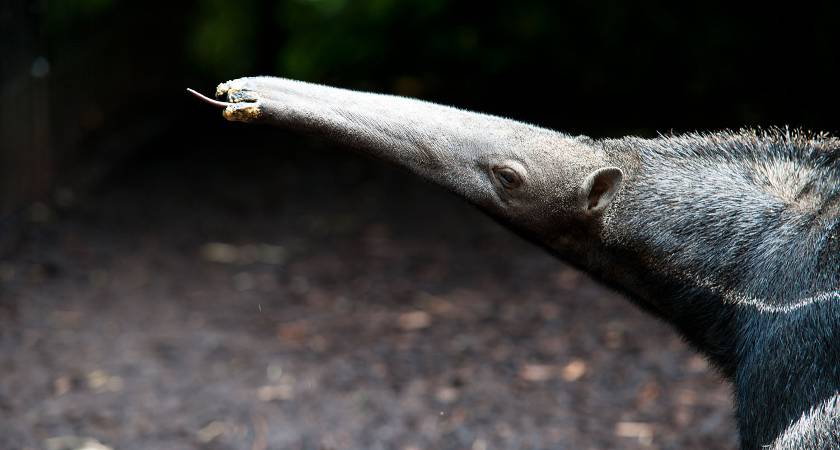EARLIER this year, Belfast Zoo announced the birth of a baby giant anteater and asked for the public's help to name the special arrival.
The zoo received almost 400 votes and the name Zira was selected for a girl and Dante was selected for a boy.
And now finally this week, zoo keepers have been able to get up close and personal with the new arrival to find out its sex and choose the winning name.
Zoo curator, Alyn Cairns, said: “The baby giant anteater was born on December 22 to parents, Pancho and Kara. Kara is a fantastic mum and for the first six months, she has been carrying the baby on her back.
"In the wild this acts as camouflage from predators but it also made it difficult for the team to find out whether the infant was male or female, as we didn’t want to disrupt mother and baby.
"In recent weeks, the baby has become more independent and we finally got the chance to find out the gender of the youngster.
"We are delighted to announce that the baby giant anteater is a girl and has therefore been named Zira. We would like to thank everyone for helping us select the name.”
 The anteater's tongue is approximately 50cm in length and is used to mop up insects. An anteater can eat up to 30,000 insects in a single day
The anteater's tongue is approximately 50cm in length and is used to mop up insects. An anteater can eat up to 30,000 insects in a single dayThe giant anteater is an endangered South American mammal.
As the name suggests, the giant anteater is the world’s biggest anteater species and can grow up to seven feet in length.
Giant anteaters are unquestionably an unusual looking species.
They have a long snout, long hair, a large bushy tail and a long tongue which is approximately 50 centimetres in length
They use their tongue to mop up insects and can eat up to 30,000 insects in a single day
In Central and South America they live in the grasslands and rainforests and, while this species was once widespread, today their numbers vary drastically between countries.
They are considered one of the most threatened mammals in Central America.
In fact in Brazil, there are serious concerns because, in some areas where they once roamed, there are now none left.
Giant anteater populations have declined by 30 per cent between 2000 and 2010 demonstrating how vulnerable the species is.
Alyn Cairns added: “Belfast Zoo takes part in more than 90 global and collaborative breeding programmes to ensure the future survival of species facing increasing threats in their natural habitat.
"There are only 200 giant anteaters living in zoos around the world, as part of the breeding programme and Kara and Pancho are the only breeding pair in Ireland.
"Our giant anteaters live with other South American species and we have said hola to a number of new arrivals this year with the birth of seven capybaras and 10 Darwin’s rhea chicks."

